- British surgeon in Gaza describes wounded Palestinians dying due to malnutrition Arab News
- Child dies of malnutrition in Deir el-Balah Dawn
- LIVE: Israel bombs Syrian army HQ; 21 killed at Gaza aid site Al Jazeera
- UNICEF: Israeli attacks killing 28 children daily in Gaza Middle East Monitor
- Displacement, poverty and insecurity fueling violence against women in Gaza Department of Political and Peacebuilding Affairs
Author: admin
-
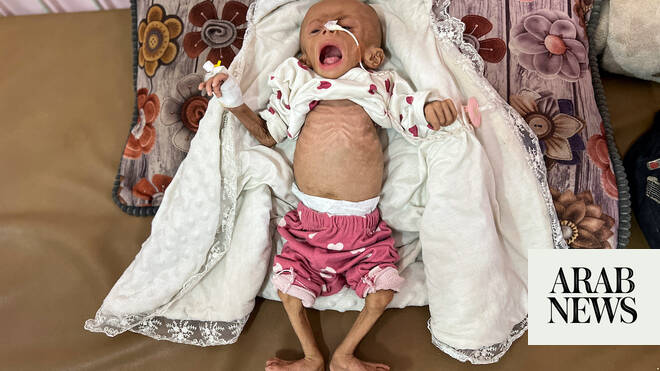
British surgeon in Gaza describes wounded Palestinians dying due to malnutrition – Arab News
-
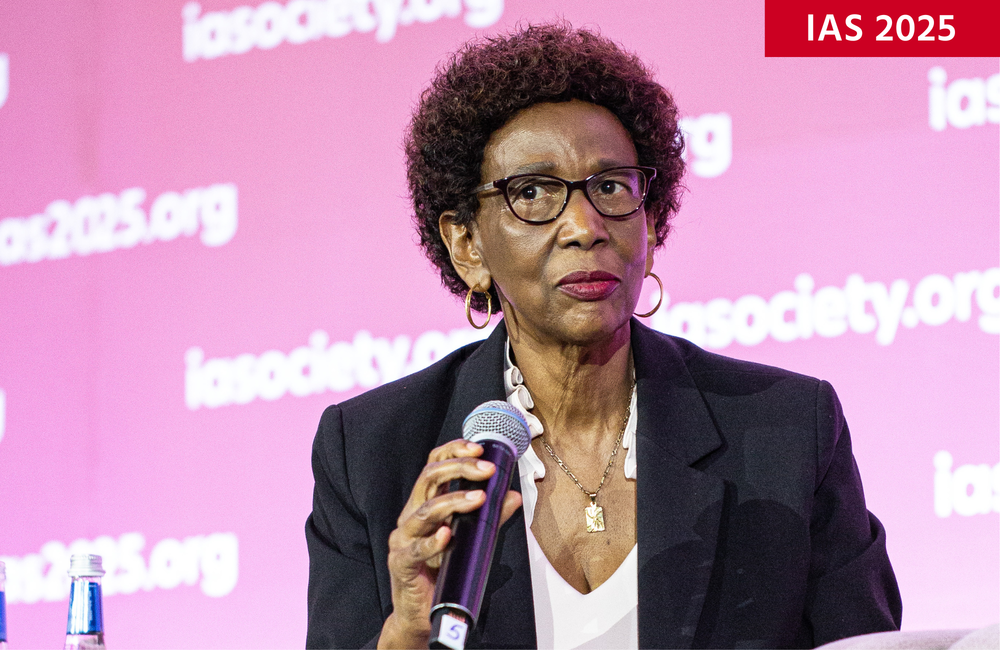
Intermittent HIV treatment dosing may be a response to the funding crisis, but adolescent study raises concerns
Intermittent HIV treatment schedules – such as weekends off treatment – may not be inferior to continuous treatment in adults with well-controlled HIV, but they are not suitable for adolescents with HIV in Africa who receive one or two viral load tests each year, studies presented this week at the 13th International AIDS Society Conference on HIV Science (IAS 2025), in Kigali show.
Intermittent treatment for people with suppressed viral load has been proposed as a way of mitigating the impact of severe funding cuts on antiretroviral drug supplies. A UNAIDS survey of 56 countries affected by US funding cuts found that almost half (46%) had experienced supply chain disruption and 14% had less than six months stock of at least one antiretroviral drug.
Although any interruption in treatment carries a risk of viral rebound if drug levels fall too low, short interruptions of two or three days per week are less likely to lead to viral rebound as drug levels may remain sufficient to suppress HIV during the off-treatment period. Intermittent treatment schedules are not recommended in any national or international guidelines.
Several intermittent treatment strategies have been tested in clinical trials that were designed with a view to relieving the long-term pressure of adherence experienced by some people living with HIV.
As the studies were each relatively small, Dr Cassandra Fairhead of the Royal Free Hospital, London, and researchers in France, Indonesia, South Africa, Spain and the United Kingdom carried out a systematic review and pooled analysis of studies of intermittent antiretroviral treatment, to look at the impact of the strategy on viral suppression and drug resistance.
The systematic review identified eight randomised trials that compared continuous treatment to intermittent treatment taken on at least three days per week. The eight studies consisted of four that evaluated 5 days on, 2 days off treatment; one study of treatment on alternate days; one study of 4 days on, 3 days off treatment; and two studies of 3 days on, 4 days off treatment. Four studies employed an NNRTI-based regimen, two studies employed bictegravir, emtricitabine and tenofovir alafenamide, and one study evaluated any three-drug antiretroviral regimen.
Study participants were virologically suppressed at baseline. All studies excluded pregnant women, and all but one excluded people with hepatitis B.
The pooled analysis evaluated virologic suppression and the development of drug resistance in the 1346 participants in the studies. The analysis found no difference in virologic suppression between intermittent and daily treatment; 3% of participants assigned to each treatment strategy experienced viral rebound above 50 copies/ml.
Intent-to-treat analysis of each of the eight studies showed no significant difference in viral suppression below 50 copies/ml at week 48 between intermittent and continuous treatment, and no significant difference in rates of viral suppression between study arms in four studies which used highly sensitive viral load tests with thresholds of 20 copies, 5 copies, 2 copies or 1 copy/ml.
Only one study found a difference in adherence rates between study arms, favouring intermittent treatment.
Three studies evaluated treatment-emergent resistance; pooled analysis showed that the rates of emergence were similar for intermittent and continuous treatment (1.9% vs 2.1%).
But in settings with less frequent viral load monitoring or resistance testing, switching after treatment failure may be less rapid, leading to higher rates of viral rebound and resistance. Studies of intermittent treatment which use the viral load and treatment protocols employed in low- and middle-income countries are urgently warranted, Dr Fairhead concluded.
Intermittent treatment in adolescents
However, the 96-week results of the BREATHER Plus study showed that for one group who often experience adherence difficulties, intermittent treatment is inferior to daily treatment. BREATHER Plus randomised adolescents to continue their existing regimen of tenofovir disoproxil, lamivudine and dolutegravir (TLD) or switch to taking TLD 5 days on treatment, 2 days off.
The study recruited 470 participants with no history of treatment failure in Kenya, South Africa, Uganda and Zimbabwe, with a median age of 16.5 years. Ninety-seven per cent had acquired HIV through vertical transmission and participants had been on antiretroviral therapy for a median of 11.8 years, including a median of 2.5 years on dolutegravir.
The primary outcome of the study was confirmed viral rebound (two consecutive viral loads above 50 copies/ml by week 96). Viral load was measured at intervals recommended in national guidelines (6-12 months). The study used two tests of non-inferiority: a standard 95% confidence interval and a “smooth away from expected (SAFE)” non-inferiority margin, in which the confidence interval and non-inferiority margin changed according to the number of viral rebounds in the continuous treatment arm.
Ten per cent of participants in the continuous treatment arm and 5% in the intermittent treatment arm experienced viral rebound during the study, a risk difference of 5.1% (95% CI 0.5, 9.9) (p=0.034) – a significantly higher rate of viral rebound in the intermittent treatment arm. Kaplan-Meier analysis showed that adolescents receiving intermittent treatment were more than twice as likely to experience viral rebound after 96 weeks compared to those on continuous treatment (hazard ratio 2.1, 95% CI 1.0-4.4). Age or treatment site did not affect the risk of viral rebound.
A total of 33 participants experienced viral rebound. Eight of 11 in the continuous arm and 19 of 23 in the intermittent arm resuppressed, including eight of the 14 who remained on intermittent treatment.
During the study, 20 participants on intermittent treatment switched to continuous treatment (six due to viral rebound, 13 due to pregnancy or wanting to conceive, and one by choice).
Resistance test results were available for 12 of 23 people with viral rebound in the intermittent arm and six of 11 in the continuous arm by week 96. Three people in the intermittent arm had developed major NNRTI mutations; in the continuous arm, one participant developed low-level dolutegravir and high-level lamivudine resistance and two developed NNRTI resistance. The patterns of resistance found after viral rebound in participants taking dolutegravir-based treatment suggest that some had resuppressed viral load on previous treatment after viral rebound, or that previous treatment histories had not been fully recorded prior to study enrolment.
An adherence sub-study using electronic pill bottles in 210 participants found that tablets were taken correctly on 92% of study days over 24 weeks in each arm.
The study investigators concluded that intermittent treatment cannot be recommended as a treatment strategy for adolescents with HIV taking TLD and receiving viral load tests every six to 12 months.
References
Hill A et al. Systematic review and meta-analysis of the efficacy of intermittent antiretroviral therapy dosing: a crisis response to the sudden cuts in USAID and PEPFAR funding. 13th International AIDS Society Conference on HIV Science, Kigali, abstract OAB0106LB, 2025.
View the abstract on the conference website.
Kekitiinwa A et al. Short-cycle antiretroviral therapy (ART) with weekends off is inferior to continuous ART in adolescents living with HIV receiving tenofovir disoproxil fumarate/lamivudine/dolutegravir (TLD) in sub-Saharan Africa: BREATHER Plus 96-week results. 13th International AIDS Society Conference on HIV Science, Kigali, abstract OAS0104LB, 2025.
View the abstract on the conference website.
Continue Reading
-
Cricket Betting Tips and Match Predictions: Pondicherry Premier League 2025 – Match 22 – Yanam Royals vs Karaikal Kniights : 18th July – Cricket World
- Cricket Betting Tips and Match Predictions: Pondicherry Premier League 2025 – Match 22 – Yanam Royals vs Karaikal Kniights : 18th July Cricket World
- Karaikal Kniights vs Genid Yanam Royals, 14th Match Cricbuzz.com
- YAR vs KAK Dream11 Prediction Today Pondicherry Premier League 2025 Match 22, Fantasy Cricket Tips Cricadium
- KAK vs RWT: Check our Fantasy Cricket Prediction, Tips, Playing Team Picks for Pondicherry T20 League 2025, Match 16 on July 15th IGN India
- PPL 2025 – Yanam Royals vs Karaikal Kniights; Ossudu Accord Warriors vs Villianur Mohit Kings: Cricket Betting Tips and Predictions: July 13 Cricket World
Continue Reading
-
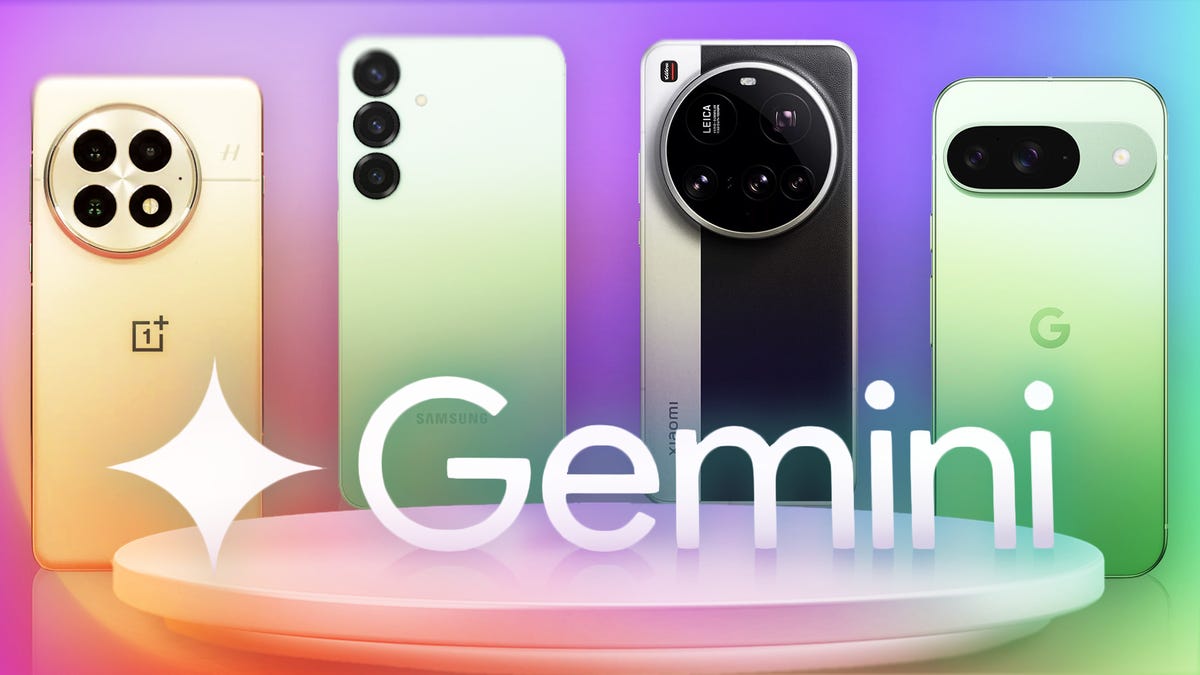
Is AI the New Android Bloatware? Why Phone-Makers Are Scrambling for Your Attention
If you’ve bought an Android phone in the past year, you’ve likely noticed that it’s packed with AI features. Maybe you knew about them before you hit purchase, maybe you assumed (safely as it turns out) that there would be some kind of AI on your new phone, or maybe they took you totally by surprise.
If you bought a Samsung Galaxy S25, for example, you’ll have had Gemini, Circle to Search, Bixby and Galaxy AI at your fingertips — all before you even thought about downloading the ChatGPT app. It reminds me of the early days of Android, when phone-makers tried to load devices with their own apps, services and overwrought UIs in the name of differentiation. Which sparks the question: Is AI the new Android bloatware?
It’s easy to understand why Android phone-makers have latched onto the idea that AI might be a useful tool to set them apart from rivals. After all, most flagship Android phones share the same DNA: a high-end processor (usually the top Snapdragon chip from Qualcomm), the latest Android software, a competitive camera system and a battery that will last for a day or more. The truth is that we’re often splitting hairs when trying to recommend one over another.
When generative AI arrived on the scene, offering the potential to bring new experiences to mobile devices, Android phone-makers were keen to tap into those possibilities. Here was a new opportunity to differentiate themselves, and give people a fresh reason to choose them over a competitor. (And over the iPhone, as Apple slow-walks Apple Intelligence into being.)
In reality, it’s not quite playing out that way — and for a few different reasons. First, research conducted by CNET and supported by the findings of independent industry analysts consistently shows us that people aren’t upgrading their phones due to the availability of AI features. Instead, the things they care about, in order of importance are price, longer battery life, storage, cameras. In other words, the same exact things they’ve prioritized for years when choosing a new phone.
The second issue is that in spite of some manufacturers’ best efforts, AI isn’t the differentiator they thought it would be. At the heart of this problem is that there’s barely an Android phone hitting the market right now that doesn’t already have the most cutting-edge tech built into it thanks to Google Gemini. Every Android phone-maker has its own flavor of AI, but more often than not, this means a bunch of gimmicky features added onto the existing software in a haphazard fashion, creating something of a Frankenstein effect.
Early-mover advantage: Galaxy AI
Of all the Android phone-makers trying to make their own AI brand stick in our minds, it’s perhaps Samsung that’s in with the best chance. Compared to rivals, it was relatively early to jump onto the AI bandwagon, launching Galaxy AI in January 2024, giving it a strategic headstart that it’s built on ever since.
Last week it followed the launch of its latest foldables with an AI forum, during which it revealed that 70% of Galaxy S25 owners were using Galaxy AI features. More than half, it added, were using Circle to Search. This year it will bring Galaxy AI to more than 400 million devices.
Android’s Circle to Search feature originally launched on Samsung Galaxy S24 and Pixel 8 phones in January 2024.
This all sounds positive, until you remember that Circle to Search is a Google feature, not a Samsung feature. Google, which makes the Android OS, often hands out temporary exclusives to Android phone-makers on new Gemini features, as it initially did with Circle to Search for Samsung in 2024. It did it again this year with an image-to-video generator, which debuted with Honor.
It’s surely a nice sweetener for Google’s relationships with phone-makers to be able to offer them these exclusives. But most of the standalone AI mobile tools we’ve seen grab the headlines are ultimately Gemini features made by Google, not the work of individual phone-makers, and it’s only a matter of time before they become available on other Android devices – including Google’s own Pixel phones.
To Google, “nothing is more important than Gemini,” said Ben Wood, chief analyst at CCS Insight. It is a “strategic pillar of the future of Google.” And how better, he adds, to ensure its success than getting it into people’s hands through the 3 billion Android phones in the marketplace (which puts Samsung’s 400 million into perspective)?
Samsung might have the largest market share of any Android phone-maker, but when you look at its reach compared to Google’s, it’s clear that Galaxy AI, which sits on top of Gemini, is at a competitive disadvantage.
Bonus AI
Of course Samsung and other Android phone-makers will say their own flavors of AI don’t compete with Gemini, but complement it. And there is some validity in this idea.
It’s rare that a phone-maker attempts to replicate something Google has already done. Instead they look for opportunities to add their own AI twist — often in the form of camera features. But whether they do this well enough for it to make any kind of meaningful impact on people’s decisions to buy their phones is another question entirely.
This week, OnePlus began rolling out its own suite of AI features, announced back in May, to the OnePlus 13 and 13R. These include some photo tools and an AI content hub called Plus Mind to act as your memory for important information.
OnePlus’ natural language search within “Mind Space” worked well for me.
It would be a waste of time for OnePlus to replicate features in house that have already been developed by Google, said Arthur Lam in an interview at the software launch. A central part of the company’s AI strategy is to “embrace and integrate [Google AI features] as fast as possible,” he said.
“At the same time, we should have our own proposition, our own idea about what OnePlus AI should stand for,” added Lam.
This is where Plus Mind comes in. It’s an interesting first step from the company, although perhaps not quite as compelling as a company such as Motorola, which is investing in a LAM (large action model) — as opposed to an LLM, or large language model — that will respond to questions with actions, not just words. The idea is that it will use its understanding of your environment and reduce the number of interactions you need to have with your phone to order a coffee or an Uber, for example.
All roads lead to Gemini
As for Google, the company thinks it’s “great” that phone-makers are developing their own AI to complement the suite of tools it’s providing them. That’s what Sameer Samat, president of Android, told Tech Radar this week.
“If the features are great, it’s more value for the consumers and more innovation,” he said. “But I think for us, as Google, we want to make sure those two pieces [Circle to Search and Gemini] are very clearly accessible, very clearly identifiable across all the different devices that consumers are considering.”
It’s a revealing statement from Samat, supporting the theory that Google’s ambition is to be the final boss of the AI smartphone experience. As Wood puts it: “All roads lead to Gemini.”
Ultimately, it’s not only Google’s reach that is going to allow Gemini to be the dominant AI tool on Android phones, but the budget and talent the company has to dedicate to AI, which individual phone-makers just can’t match.
This means that when it comes to differentiation, AI is unlikely to be the factor that sets brands such as Samsung and OnePlus apart. “Handset manufacturers are in danger of being left to compete more on brand and industrial design than AI features and capabilities,” said Wood.
True differentiation: The Nothing story
One company that seems to have realized this is UK-based Nothing. Over the past year or so, I’ve attended, either in person or virtually, almost every major Android phone launch. One thing most of them have in common is a Google representative on stage espousing the many benefits of Gemini.
At the launch of the Nothing Phone 3 in London earlier this month, the company bucked this trend. Nothing still has a tiny market share — around 0.2% as estimated by founder and CEO Carl Pei. But since its inception in 2022, it’s managed to thrive and grow in a competitive, mature phone marketplace thanks largely due to its focus on design.
Nothing’s focus on design sets it apart.
That’s not to say it’s ignored AI, but it has taken a different approach. Earlier this year it launched “Essential Space,” an AI-powered portal for storing and organizing everything important on your phone, from screenshots to calendar invites. It was a unique feature that’s already been effectively copied by some other phone-makers (see OnePlus’ efforts above).
Nothing does use Gemini, but it’s not reliant on it in the same way its competitors are. “We don’t want to do the model side,” Pei explained to me at its Phone 3 launch earlier this month. “There’s companies that are really good at it. They’re very well funded and they’re all competing against each other.”
Instead, Nothing has built its AI platform to be “model agnostic,” he said. “When the models get better, we just switch to the best one. Right now, I think it’s powered by Gemini, but there’s no stopping us from changing to the latest and greatest.”
The uphill battle ahead
A flexible approach to AI seems like the safest bet at this time when the technology is changing minute by minute. It’ll be an uphill battle for Android phone-makers to keep up, and hope their own efforts will remain relevant and prove useful as Google charges ahead offering best-in-class mobile AI experiences.
The real fight here is the same one we’ve seen play out for the past decade and a half: It’s Apple versus Google. The true differentiation we’re seeing in mobile AI right now is between Google Gemini and Apple Intelligence, with the former leading the field and the latter trailing in its wake.
For as long as Google attempts to aggressively build upon its early AI lead while holding the Android ecosystem in the palm of its hand, phone-makers will need to do more than just rely on AI to persuade us that their Android offering truly is the best of the best.
Continue Reading
-

UK to lower voting age to 16 in major electoral reform | News
The move, following through on a campaign pledge, will give the UK one of the lowest national voting ages in the world.
The United Kingdom is to lower its voting age in general elections from 18 to 16, giving the country one of the lowest voting ages in the world in what the government says is a bid to “modernise our democracy”.
The centre-left Labour government announced the plans on Thursday, following through on a campaign pledge it made before coming to power last year. The move is one of several planned changes to voting rules in a bid to improve democratic participation and remove barriers to voting.
“I think it’s really important that 16- and 17-year-olds have the vote, because they are old enough to go out to work, they are old enough to pay taxes, so [they] pay in,” Prime Minister Keir Starmer said.
“I think if you pay in, you should have the opportunity to say what you want your money spent on, which way the government should go,” Starmer added.
There are currently about 1.6 million 16- and 17-year-olds in the UK.
National alignment
The change, which will still require the government to bring legislation before Parliament, where it has a comfortable majority, will align voting ages across the UK.
Currently, 16-year-olds in Wales and Scotland can vote in the devolved Welsh and Scottish parliaments, respectively, as well as in local elections, but not in the UK’s general elections.
Globally, most countries have a voting age of 18, although some countries like Austria, Argentina, Brazil and Ecuador allow for voting in national elections at age 16.
Belgium, Germany and Malta allow 16-year-olds to vote in elections to the European Parliament, but not their national legislatures.
Bank cards for ID
Other planned changes include introducing automated voter registration and making UK-issued bank cards an accepted form of ID at polling stations.
The latter change has been made in response to a requirement introduced by the previous Conservative government for voters to show a photo ID, which the Electoral Commission claimed had prevented about 750,000 people from voting in the 2024 election.
Voter turnout in that election was 59.7 percent, the lowest level since 2001.
“For too long, public trust in our democracy has been damaged and faith in our institutions has been allowed to decline,” Deputy Prime Minister Angela Rayner said.
“We are taking action to break down barriers to participation that will ensure more people have the opportunity to engage in UK democracy.”
UK Deputy Prime Minister Angela Rayner said the moves would help to restore public trust in democracy [File: Leon Neal/Getty] Mixed responses
The opposition Conservative Party criticised the changes to the voting age, with Paul Holmes, the party’s spokesperson on community issues, calling the policy “hopelessly confusing” about the age of majority.
“Why does this Government think a 16-year-old can vote but not be allowed to buy a lottery ticket, an alcoholic drink, marry, or go to war, or even stand in the elections they’re voting in?” he said in the House of Commons, Press Association Media reported.
But others applauded the move.
Naomi Smith, chief executive of civil society campaign group Best for Britain, said the change was “a brave choice set to benefit generations to come”.
Harry Quilter-Pinner, executive director of the Institute for Public Policy Research think tank, said he backed the move, the AFP news agency reported.
“Our democracy is in crisis, and we risk reaching a tipping point where politics loses its legitimacy,” he said.
Continue Reading
-
Asteroid size of 10-storey building to skim past Earth – MSN
- Asteroid size of 10-storey building to skim past Earth MSN
- Asteroid size of 10-storey building to fly past Earth today at 13,900mph Metro.co.uk
- NASA warns building-sized asteroid 2022 YS5 set for close Earth flyby on July 17; here’s why scientists a The Times of India
- Asteroid, roughly size of a plane, to pass by Earth; know if it poses any threat Stocktwits
- NASA warns! 1200- foot asteroid 2005 VO5 to pass Earth today – know its speed, distance, and potential risk MSN
Continue Reading
-
Connie Francis, US 'Stupid Cupid' pop singer, dies at 87 – Reuters
- Connie Francis, US ‘Stupid Cupid’ pop singer, dies at 87 Reuters
- Connie Francis dies, months after her 60s song goes viral on TikTok. BBC
- Inside Connie Francis’ Final Days: Singer Would Be ‘Smiling’ Knowing She ‘Left This World as Big a Star’ as Ever (Exclusive) People.com
- Connie Francis, ‘Pretty Little Baby’ and ‘Who’s Sorry Now’ Singer, Dies at 87 The New York Times
- Gracie Lawrence, Who Is Currently Portraying Connie Francis on Broadway, Honors Late Singer’s ‘Legacy’ After Her Death at 87 AOL.com
Continue Reading
-
Possible Proplyd Disk Discovered In Rubin Observatory’s First-Look Image – astrobiology.com
- Possible Proplyd Disk Discovered In Rubin Observatory’s First-Look Image astrobiology.com
- A Wisconsin scientist helped launch a telescope that will create the greatest cosmic movie of all time WPR
- The deepest view into the universe yet thenewworld.co.uk
- Most Beautiful Space Photos Are Here: This Is How the Sky Looks Holistic News
- UCSC prof’s work helps powerful new Vera C. Rubin Observatory capture secrets of deep space Lookout Santa Cruz
Continue Reading
-
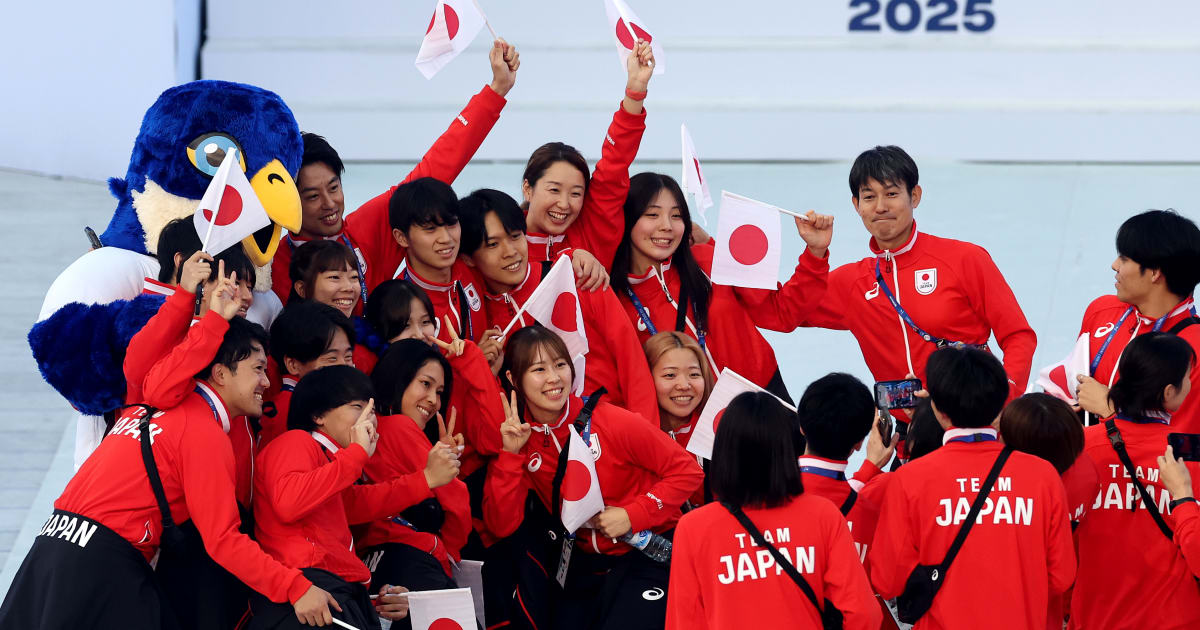
2025 FISU World University Games Rhine-Ruhr: All final results and medallists
The FISU World University Games 2025, one of the world’s largest multi-sport events, takes place in Germany from 16 to 27 July across five cities in the Rhine-Ruhr region – Bochum, Duisburg, Essen, Hagen, and Mülheim an der Ruhr – as well as the capital, Berlin.
Approximately 8,500 athletes from over 150 nations are competing for medals in 18 sports. The basic requirement for participation is that the athletes are enrolled at a university.
Scroll down for the results and all the medal winners from the FISU World University Games Rhine-Ruhr 2025.
Continue Reading
-
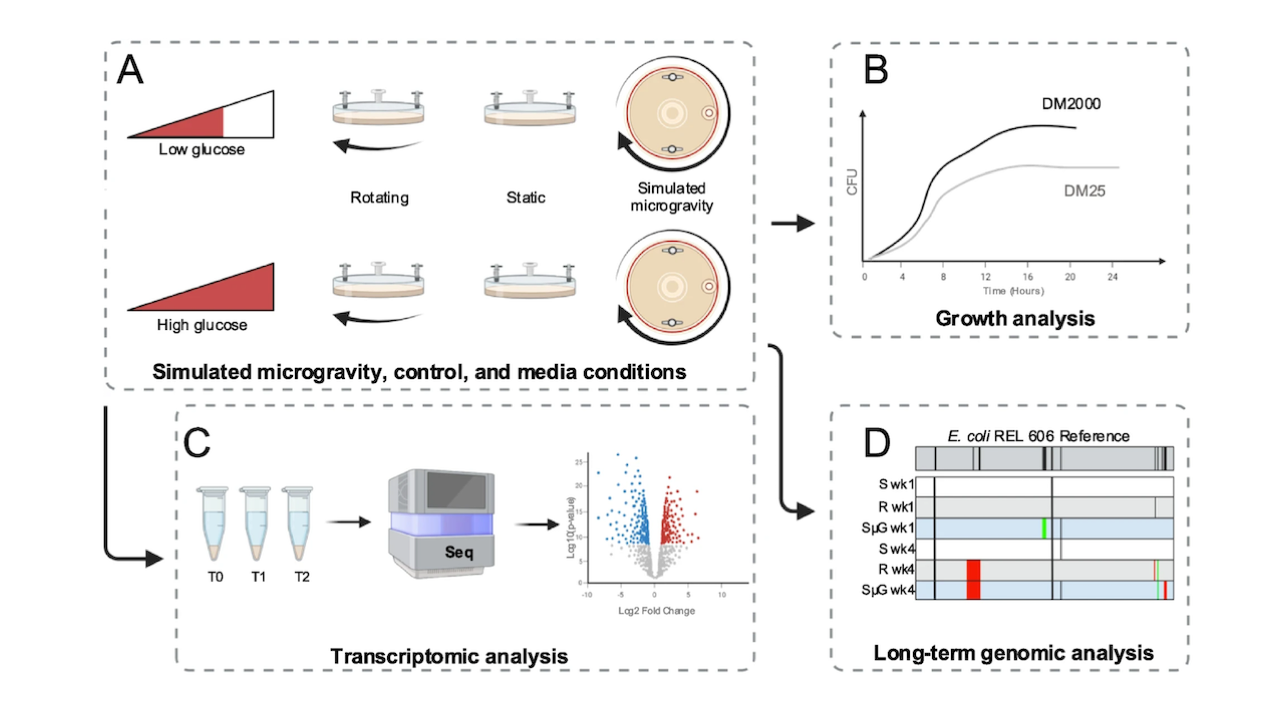
Simulated Microgravity Triggers A Membrane Adaptation To Stress In E. coli REL606
Schematic of project design. A E. coli REL606 strains were grown in High Aspect Ratio Vessels (HARV) on Rotating Wall Vessels (RWV) for simulated microgravity (SµG) and rotating (R) control in addition to immobile static (S) control. Each growth condition was assayed in glucose-limited (DM25) and glucose-replete (DM2000) media. B In a short-term culture study, the growth analysis of SµG, R, and S cultures in both media types was conducted. C Also in this short-term study, samples were collected at time of inoculation (T0), at 4.5 h post inoculation in DM25 and 6.5 h post inoculation in DM2000 (T1), and 24 h post inoculation (T2) for each condition for RNAseq and differential gene expression analysis. D In a follow-on long-term culture study, samples were passaged each day for 28 days. Samples from every 7th day of culture were subjected to whole genome sequencing to assay the genomic alterations for each growth condition. Created with BioRender.com — BMC Microbiology
Investigating the evolution of Escherichia coli in microgravity offers valuable insights into microbial adaptation to extreme environments.
Here the effects of simulated microgravity (SµG) on gene expression and genome evolution of E. coli REL606, a strain evolved terrestrially for 35 years, is explored. The transcriptomic changes for glucose-limited and glucose-replete conditions over 24 h illustrate that SµG increased the expression of genes involved in stress response, biofilm, and metabolism.
A greater number of differentially expressed genes related to the general stress response (GSR) and biofilm formation is observed in simulated microgravity cultures under glucose-limited conditions in comparison to glucose-replete conditions.
Longer term SµG culture under glucose-limited conditions led to the accumulation of unique mutations when compared to control cultures, particularly in the mraZ/fruR intergenic region and the elyC gene, suggesting changes in peptidoglycan and enterobacterial common antigen (ECA) production.
These findings highlight the physiological and genomic adaptations of E. coli to microgravity, offering a foundation for future research into the long-term effects of space conditions on bacterial evolution.
Simulated microgravity triggers a membrane adaptation to stress in E. coli REL606, BMC Microbiology (open access)
Astrobiology, space biology,
Continue Reading
